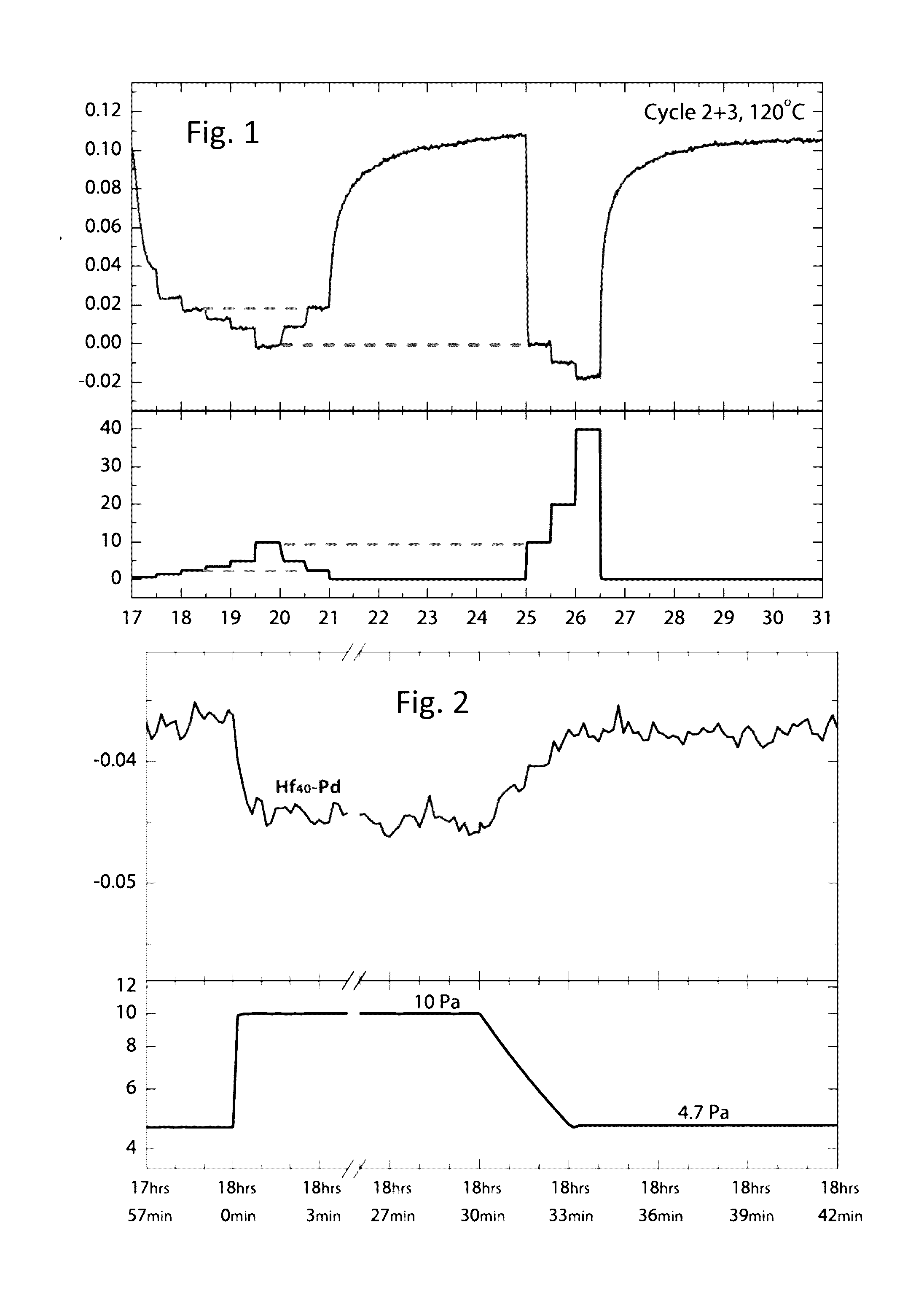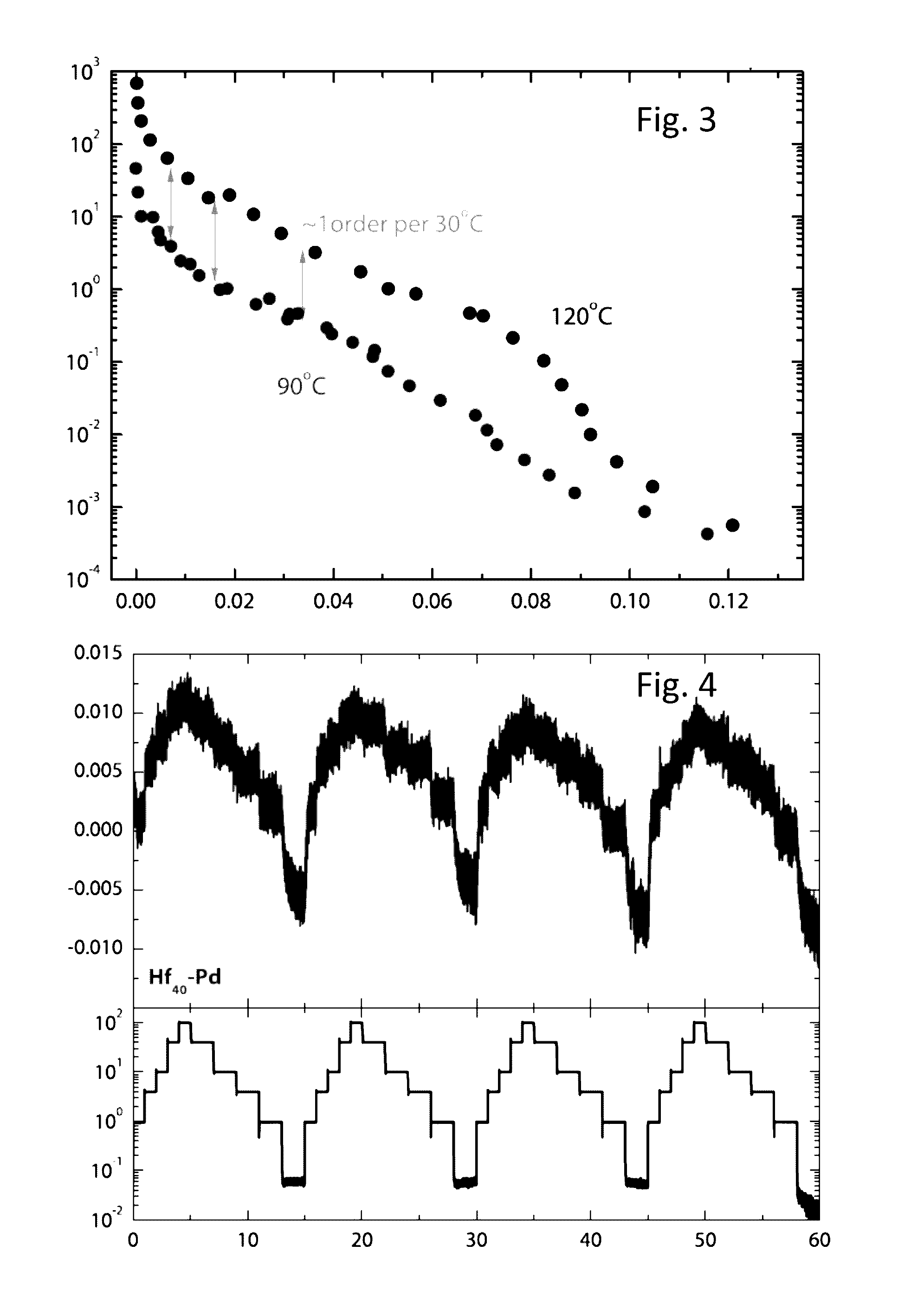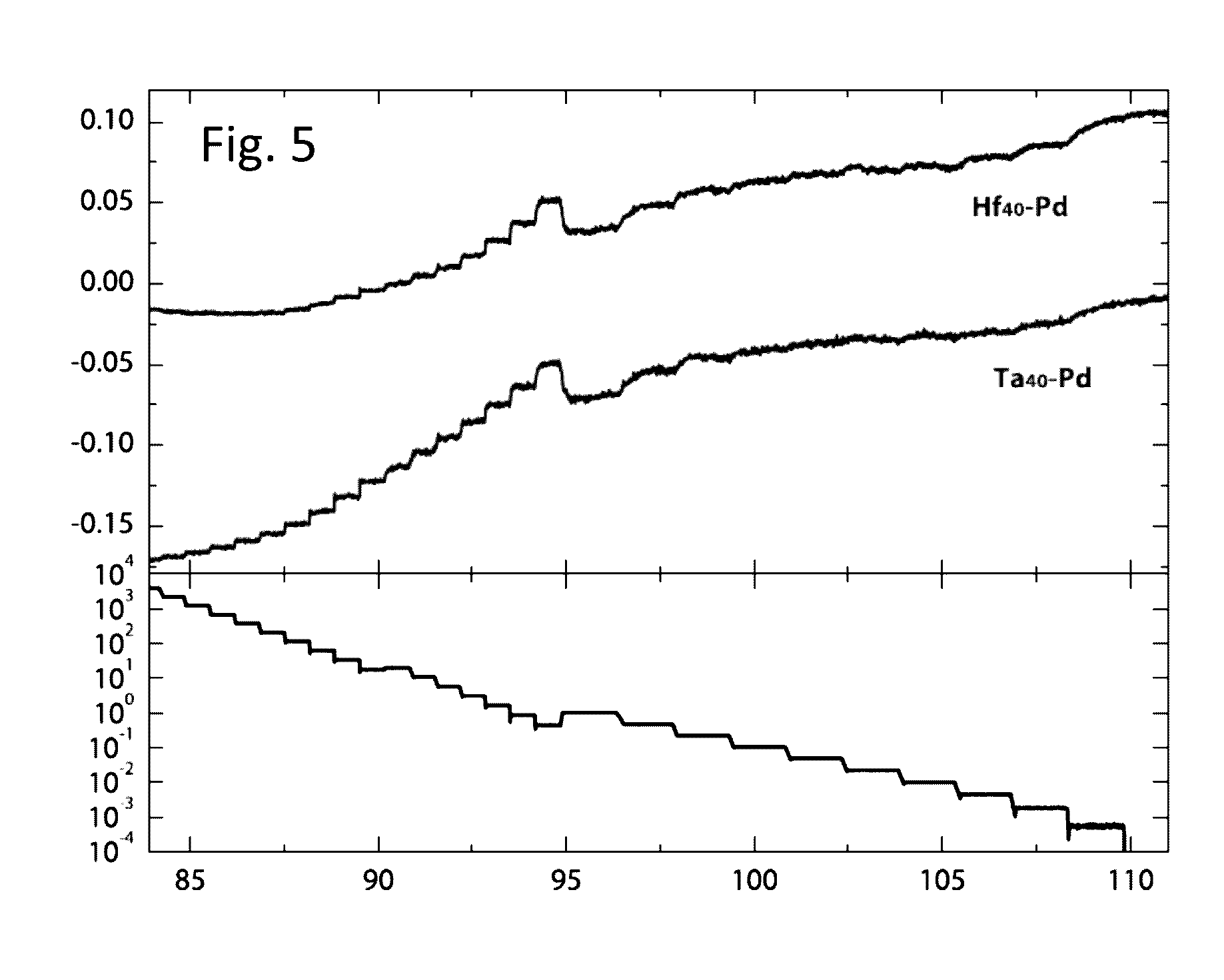Single element hydrogen sensing material based on hafnium
- Summary
- Abstract
- Description
- Claims
- Application Information
AI Technical Summary
Benefits of technology
Problems solved by technology
Method used
Image
Examples
examples
Experimental
Preparation
[0086]Thin films of Hafnium and Tantalum, respectively, with a thickness of 40 nm are deposited on a quartz substrate by means of DC magnetron sputtering. To promote the hydrogen dissociation and to prevent the sensing layer from oxidation, the sensing layer is covered with a Pd-layer (10 nm).
Characteristics
a) Range of Hydrogen Detection
[0087]At 120° C., for Hafnium inventors observed an optical response between 10−4 and 200 Pa; for Tantalum inventors observed an optical response between 10−4 and 103 Pa. After further improvement, a larger range than the previous seven orders of magnitude is to be found. It is noted that a pressure of 10−4 Pa is the lower limit of inventors equipment and no saturation of the optical contrast is obtained at pressures close to this lower limit. Thus, at least at a lower pressure (smaller than 10−4 Pa) is to be expected.
[0088]It is observed that at 90° C. the above range shifts down with approximately one order of magnitude.
b) Hy...
PUM
 Login to View More
Login to View More Abstract
Description
Claims
Application Information
 Login to View More
Login to View More - R&D
- Intellectual Property
- Life Sciences
- Materials
- Tech Scout
- Unparalleled Data Quality
- Higher Quality Content
- 60% Fewer Hallucinations
Browse by: Latest US Patents, China's latest patents, Technical Efficacy Thesaurus, Application Domain, Technology Topic, Popular Technical Reports.
© 2025 PatSnap. All rights reserved.Legal|Privacy policy|Modern Slavery Act Transparency Statement|Sitemap|About US| Contact US: help@patsnap.com



